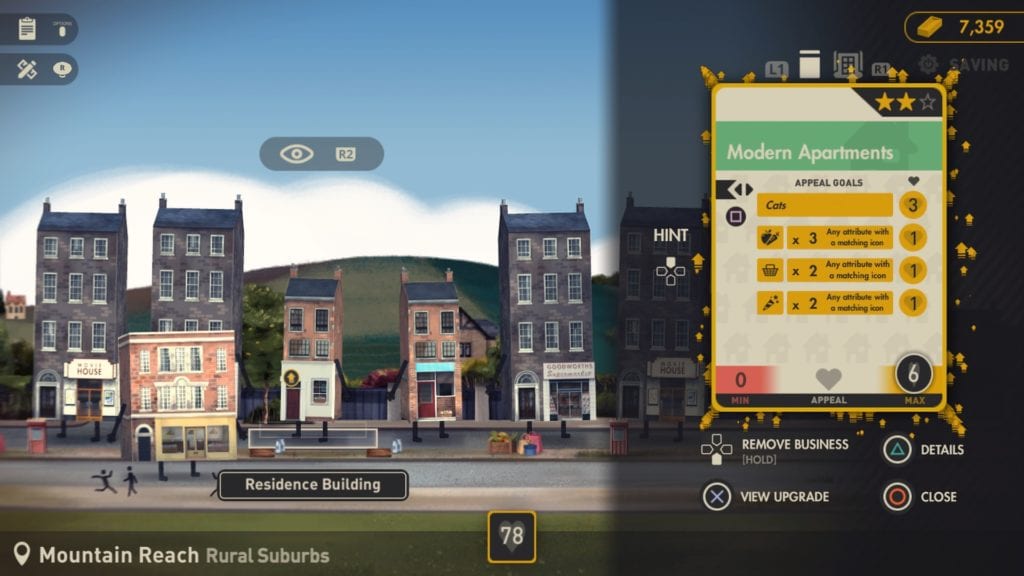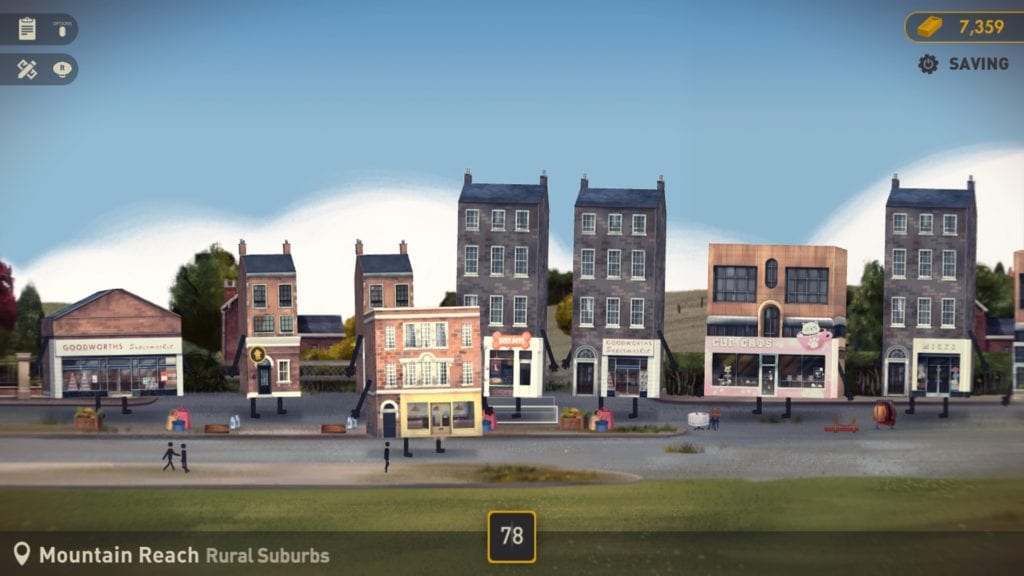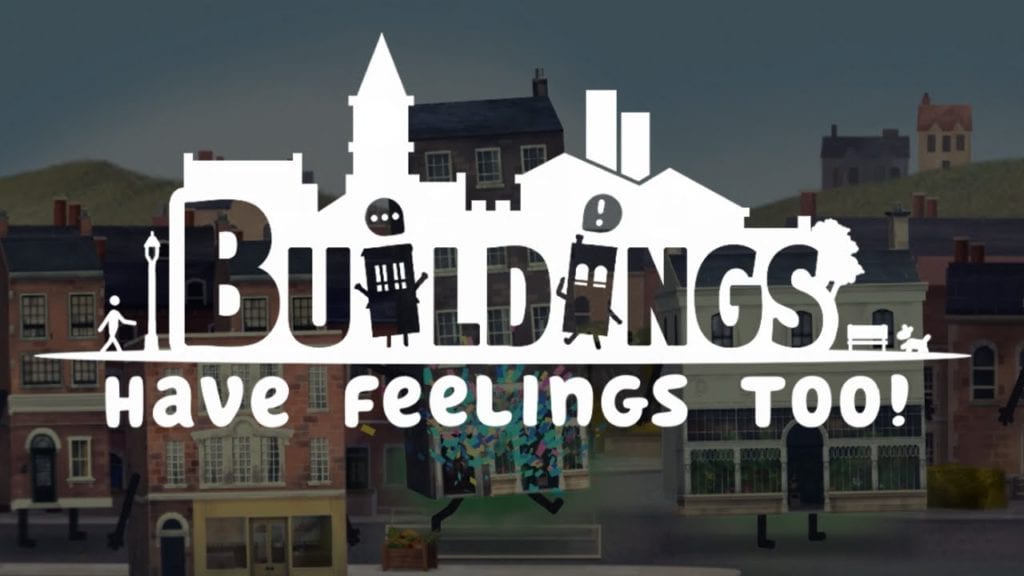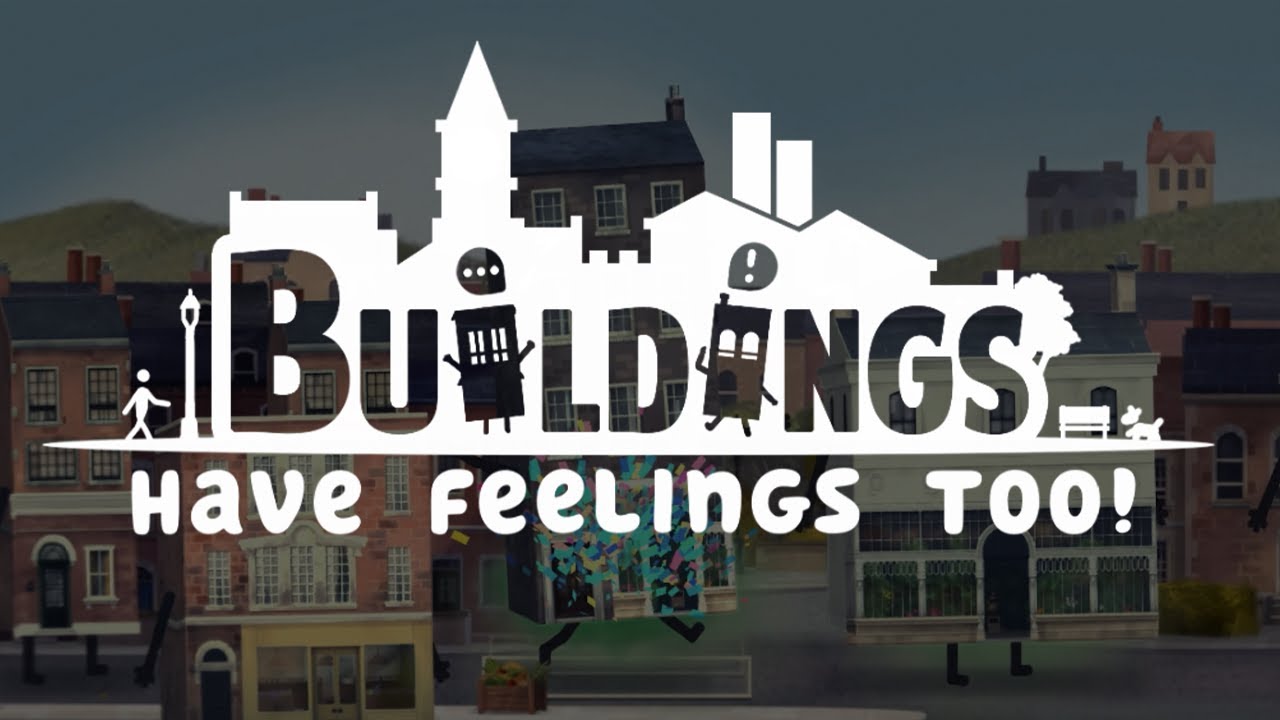I grew up playing Sim City 2000 and fell in love with the control it gave with how you wanted to build. There was a sense of power and the sky felt like the limit in that game. Unfortunately, Buildings Have Feelings Too! doesn’t give you enough power and suffers from tedious and frustrating gameplay.
Published by Merge Games and developed by Blackstaff Games, Buildings is a city management and side-scrolling strategy game where all the buildings are able to walk and talk, and they have goals, aspirations, and a rotating set of puns and quips. It comes with its own charm and character, but after a couple of hours, both the animated buildings and the convoluted gameplay start to become tedious. The puzzles become hard to understand because the game doesn’t do the best job at explaining things. Instead, you’re left to dive into convoluted menus in an attempt to figure out exactly what you’re trying to achieve for your buildings and their happiness, and on top of that, there is never really a clear end goal for the game itself.
Most of the game’s frustration comes from the game’s appeal system. Each building has things that make them happy, make them sad, and a set of things they need to be leveled up. Some of these things make sense: some buildings don’t want to be around smelly businesses like a butcher or fishmonger. In some cases, it can be hard to figure out why a set of buildings in a row that logically would make sense in the real world may cause one building to fall into disrepair and become unhappy. When building, you use the game’s currency: gold bricks. You earn them by completing objectives and upgrading buildings.
There were several moments where I found myself out, and I’d have to demolish buildings I didn’t really need anymore and rebuild things to earn golden bricks and found myself getting stuck in this loop of tearing down parts I had spent time on so I could hit new objectives. That created a lack of connection with what I was building since things could be torn down so easily with no real repercussions.

When building, there is no undo button. If you create a building that does not appeal to the others around it and want to change it, you’re in a race against a timer for those unhappy buildings so they don’t close. In order to prevent that, there are some frustrating menus to navigate. You could also take the building’s hand and move it across the level to another section of the city to reset the timer of those buildings, but that is also tedious and easily one of my least favorite parts of the game.
You’re tasked with dragging a building across as the two skips leisurely to your destination, and there is no sprint button. When moving buildings, you have the option to put the building following you in the place of another, but when that happens instead of swapping spots with the building, the new building just starts following you so you have to walk back across the city landscape and manually place it. Sometimes, you have to move many buildings over a little individually to make room to build or move a building into a spot, and other times, you’re given a shortcut where the buildings will move themselves down and it’s very convenient.
There is definitely a sense of whimsy to the buildings themselves, as tedious and frustrating as they can be. Each building has its own distinct style and depending on what type of business inhabits it, there will be quippy phrases the building will say when you talk to it. The personalities aren’t developed much past these remarks, and it becomes a bit grating the longer you play as phrases are reused over and over. It still is cute and fun, though. There are certain landmark buildings in each city or level with a bit more of a personality, and it’s fun getting to know them. They are usually the catalyst for that level’s story and do much of the narration and explanation.

I also appreciated the history the game presents with its story (I use that term loosely). It does a good job at applying just enough history for each level and helping you become invested in the objectives the game gives you – may that be developing the theater district or demolishing run-down orphanages to expand the city further. On the technical side, the game would stutter anytime it autosaved and every time I thought the game was freezing. I had a few issues where a text box would linger on the screen and wouldn’t close out, causing me to have to restart the game. Finally, the music in the game varied from incredibly simple and annoying to charming. On some levels, I had to turn the music off and on others, it was fine.
I am not sure I would ever call the game fun, but there are moments where things click and there is a sense of accomplishment. Though every time I cleared a particularly challenging objective with a lot of moving parts and felt proud, the game threw something frustrating or unexplained at me that made the game feel like a chore again. That is perhaps the biggest issue I had with Buildings Have Feelings Too!: finding joy in the game.







